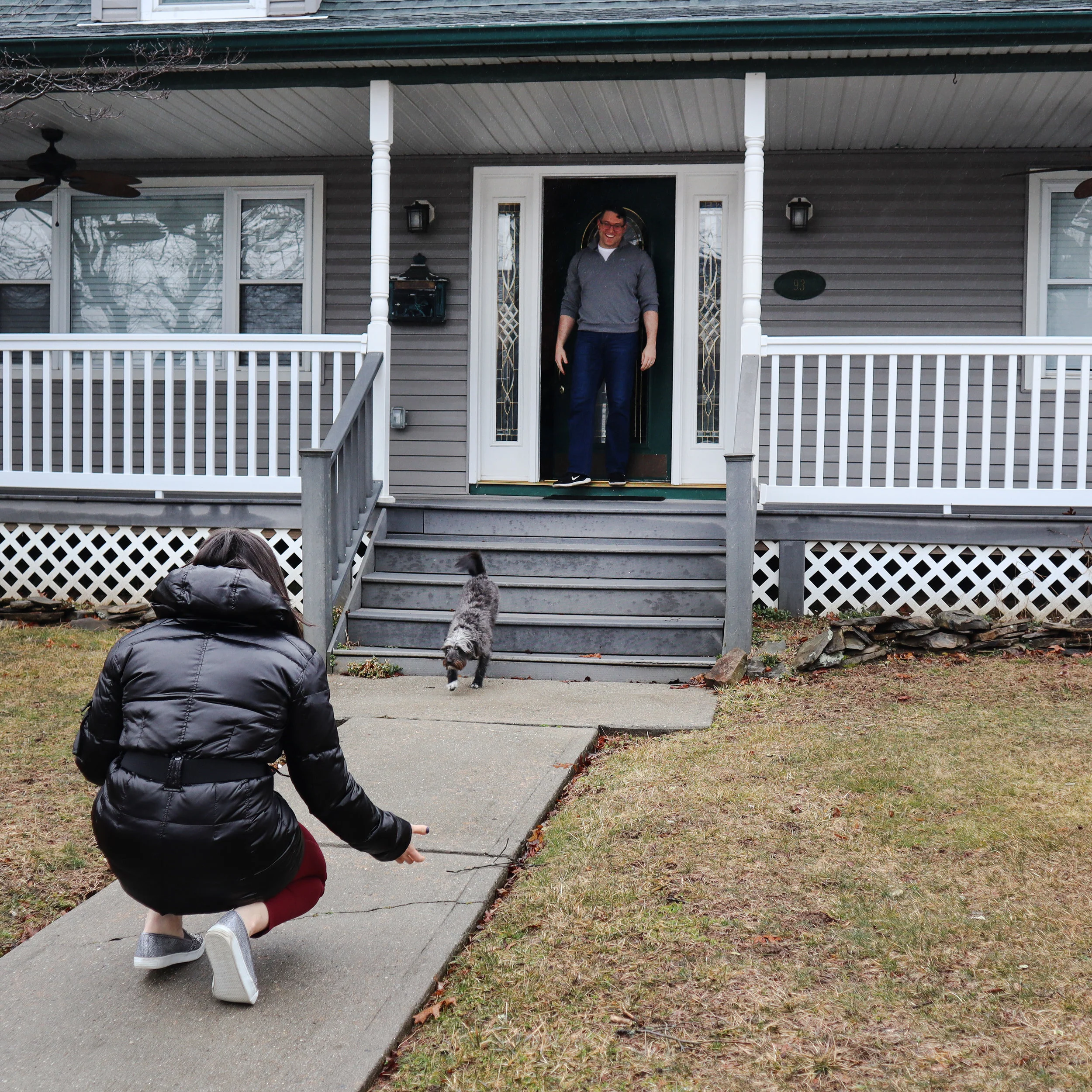You've had those crazy two weeks where Murphy’s law is your best friend and shit hits the fan twice a day. You're not sleeping because of juggling a family disaster and a massive make-or-break work project. When you get in bed, the anxiety of missing training, and the implications it will have on your meet performance in 7 weeks is keeping you up at night.
Hands up if you’ve ever had a week, or three, like that? I know I sure have. And so have almost ALL of our clients. Why? Because that’s life!
The longer you’ve been lifting and the stronger you get, you might have noticed you need to spend more time in the gym to continue to improve. This is a well known fact and happens for many reasons.
For one, lifting heavier and heavier weights likely means your workouts take longer because you need more rest between sets. The longer you do this, the more volume you probably need to continue to get stronger, which means more reps, more sets, and more rests between sets. And, after a certain period of time, 3 days just doesn’t cut it anymore, and to continue to get stronger you need to go to train more frequently. This all adds up to more training time to get the results you want.
You’re not the only one struggling with the amount of time training takes and how it works with your life schedule. While it may, at some point, be ideal to train 5 x per week and spend 2-3 hours in the gym, let’s face it, we are humans and have social, occupational, and familial obligations that are oftentimes higher priority than the gym.
And since life is life, we need to have some mental and programmable strategies to decrease anxiety and optimize the situation to get the most out of training during difficult and stressful times.
When training starts to take too much time, cause stress and anxiety, and become unenjoyable there are 3 realms I like to tackle.
1. Training Session Changes
My first few recommendations can shave 10-30 minutes off a training session depending on how you implement them. Adjusting how you structure and move through your training sessions can be all you need to reduce excessive time spent training and anxiety worrying about the effects of long sessions on life or missed sessions on gains.
Time your rests! This is huge and where a lot of people lose time without even realizing it. In today’s day-and-age with smartphones and social media, it’s easy to get lost in the scroll during your five minute rest and quickly turns in to 7. When this happens on 5 working sets you’ve easily wasted 10 minutes you will never get back. Setting a timer will keep you honest and moving during your session. Sure, scroll IG or check your email but as soon as that timer goes off you better be under the bar, or yet again you’re going to be late for work! So what if your allotted “4 minute rest” isn’t enough? That’s ok, set the timer for longer but commit to the timer! Committing to the time is a surefire way to not lose minutes to mindless scrolling or even those chatty gym goers who just don’t seem to stop talking, “OH sorry! That’s my timer, I have to do my set.” Conversation over :)
Superset your lifts! This can be done in a few ways and it all depends on how much time you have, what you’re comfortable with, and what equipment you have available. My favorite is to warm up my next lift between work sets on the previous. Warm up sets rarely take much energy so I recommend doing a work set and then hoping right over and doing a warm up. Then, turn your timer on and rest before your next work set, rinse and repeat. By the time you’re done with the work sets for your first lift, you’ll be on the work sets of your second lift, and ready to start warming up your third! If you’re really crunched for time you might want to warm up two lifts at the same time. You’ll want to be really diligent with your timer on the work sets for those two lifts and recognize that your worksets might feel a bit harder than usual. But you’re not late for work. And now you don’t have to do conditioning ;)
Drop accessory work! Curls, planks, and booty bridges, oh my! Let’s be honest, those 3 sets of curls are not doing much for the girls, nor are they absolutely necessary to drive progress on the Big Lifts. Neither are the other smaller, single joint, or isometric exercises that are programmed after your main barbell work. So, when you’re in a rush, crunched for time, and starting to get anxious, drop the little things and focus on the big ticket items.
2. Program Schedule Adaptations
Plan ahead. The saying “Fail to plan, then plan to fail,” didn’t come out of nowhere. If your training and progress is important to you then you should take time before each month and each week to look at your schedule. This will allow you to plan your weekly training sessions around the big ticket items on your calendar. Know you’re going to be away for a 3 day seminar at the end of the month? Maybe two weeks ahead you can start your training on a Sunday so the week of your seminar you end your training on Thursday before you’re without a gym on for three days.
Combine training days. Sometimes we are stuck in a rut with last minute schedule changes or the flu that hit the town by storm. We must adapt. Just like we talked about dropping accessory work earlier, drop accessory and combine training days. If this puts too many similar lifts in one session I recommend dropping the least “specific” exercise to your overall competition lifts. Alternatively, you can spread your last training day across a few training sessions depending on how “off” your schedule is.
Extend your training week. Finding it hard to consistently complete all your training in a 7-day, Sunday-Saturday training week? Not a big deal! And quite common for nurses, doctors, firemen, and cops who all work long shifts multiple days in a row and then have a couple days off. If you consistently “fail” to complete your training in the traditional “7 day week,” then spreading it out over a 10-day or 14-day training week might be best for you. Alternatively, you can…
Speak to your coach to discuss the obstacles you’re facing with your schedule and come up with alternative ways to design the program so that it works better with the rest of the obligations your life has to offer!
3. Mindset Changes
Chances are if you’re serious about your strength training, missing sessions, dropping exercises, or training in non-optimal environments and at non-optimal times stresses you the F out. Here’s the deal...life happens! And because training exists within our lives, it will serve us well to have a flexible mindset when it comes to training in order to reduce the effects of anxiety and stress on our recovery and performance.
When you’re scrolling social and comparing yourself to the highlight reels of all the top powerlifters, remember that what you see is what they want you to see. No one’s life is perfectly perfect. Everyone has setbacks, road blocks, abrupt schedule changes, poor nights of sleep, stomach aches, food poisoning, etc. etc. And when you’re hugging the toilet missing your training session on Wednesday because of food poisoning, remember that...
...dropping a few exercises or a training day this week won’t screw you up long term.
Recognize lifting is a part of life, it isn’t all life is. Things that are really important, that many people don’t have, are having a roof over your head, food to fill your belly, a job that pays the bills, and friends and family who love you. If you let that go to sh*t because you “couldn’t miss your training session,” you’re going to feel very sad and lonely at some point. Trust me, I speak from experience.
Lastly, be kind to yourself. Like I said before, social media is a scroll of what people want you to see and believe about them. Cut yourself some slack and remember that humans are not perfect. Being kind to yourself and allowing yourself to shift your schedule around, adjust training sessions, and shift priorities, will help you find balance and peace of mind which ultimately improves anxiety, reduces stress hormones, and improves performance.
So, the next time you start to feel that deep dark pit in your stomach churn because training is causing you anxiety, run through this checklist:
Address intra-session factors:
Time your rests and stick to it!
Supersets warm ups and work sets of different lifts
Drop the least important exercise(s)
Adjust your program:
Look at your month and your week in advance to get ahead of any fixed obstacles
Combine training days on an as needed basis
Break free from the “7-day” training week and utilize a 10- or 14-day training week
Speak to your coach to see if you can reconstruct your program to fit your life a bit better
Change your mindset to remember:
Dropping a few exercises or a training day this week won’t screw you up long term
Recognize lifting is a part of life, it isn’t all life is
And be kind to yourself
If you’re still struggling to reduce training anxiety and find a program structure that works best for you and YOUR life, set up a free call with one of the PRS coaches. We know that training is a part of life and that you have other responsibilities and priorities. We help our athletes develop unique, results-driven programs that keep them excited about training and not weighed down by it!
If you're interested in learning how to optimize barbell technique, maximize strength and muscular development, and reduce injury risk (and peeing) for you, your clients or patients, then join the waitlist to get insider information on all the PRS online courses when they're ready for enrollment!



